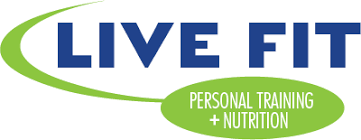Biometric Screening
Biometric screening
According to the CDC, a biometric health screening is defined as "the measurement of physical characteristics such as height, weight, body mass index, blood pressure, blood cholesterol, blood glucose, and aerobic fitness tests that can be taken at the work site and used as part of
a workplace health assessment to benchmark and evaluate changes in employee health status over time."
Total Cholesterol - a waxy substance that comes from two sources; the body , especially the liver and food, specifically animal sources. like meats, seafood, poultry, and full t dairy products. Excessive Total cholesterol can from plaque between layers of the artery walls, making it harder for the heart to circulate blood. plaques can break loose and cause blood clots, potentially leading to a stroke. Tips: reduce fat intake such as fats which are found in baked goods or red meat, and begin an exercise regimen that includes 150 minutes of exercise collectively throughout the week.
High Density Lipoprotein - Or healthy cholesterol, removes low density lipoprotein or bad cholesterol from the arteries. high HDL helps prevent arteries from becoming clogged and protects against heart attacks and strokes. Tips: Increasing food which contain omega 3 fatty acids such as salmon, walnuts, flax, or chia seeds; and doing vigorous exercise to raise healthy cholesterol.
Triglycerides - Type of fat in the blood. high levels are associated with atherosclerosis. high triglycerides can be attributed to a diet high in carbohydrates excess alcohol, smoking, and decreased physical exercise. Tips: a reduction in any of these areas can lead to an improvement in your triglycerides.
Glucose - is the master fuel for the body, an important simple sugar for metabolism. an elevated glucose level indicates an increased risk for diabetes. diabetes is a condition that occurs when the body has a difficult time regulating the level of glucose in the blood. high blood sugar is a problem when it builds up progressively in the blood. this can cause the cells to be starved for energy and your body will begin to compensate. over time high blood sugar can cause problems with nerve pain, numbness in limbs, heart and kidney disease, and even eyesight. Tips: by reducing total calories, losing weight and engaging in regular physical activity, you can better control your blood sugars. it can be as simple as going on a walk after each meal.
A1C - Is a measure of your average blood glucose level for the last 3 months. this is a common test to diagnose type two diabetes. A1Cm measures the percent of hemoglobin a protein in red blood cells that carries oxygen, is coated with sugar. the higher your A1C, the more at risk you are for chronic disease and circulatory issues. Tips: by reducing total calories, losing weight and engaging in regular physical activity you can lead to better control of blood sugars and a lower risk for developing diabetes.
Blood Pressure - A measure of the pressure needed to circulate blood from the heart to the body. possible health consequences that can happen when high blood pressure is left untreated include, heart attack, heart pain/angina, stroke, kidney damage, and more. Tips: losing weight, learning stress management techniques and participating in regular physical activity ma reduce blood pressure and risk of chronic disease.
Body Fat Percentage - A measure of your total body fat compared to your total body weight. This represents the percent of your actual body weight that is fat. lean mass is the weight of bones, organs, and muscles. a body measurement above the optimal range may indicate a risk of heart disease, high blood pressure, diabetes or other chronic disease states. Tips: increasing water consumption, eating more fruits, veggies, lean protein, whole grains, and low calorie dairy, exercising daily may reduce body fat percent and increase lean muscle tissue.
Body Mass Index(BMI) - Is one of the many indicators that helps determine health risk of developing a chronic disease, such as heart disease , cancer or diabetes. this is a height and weight measure does not account for muscle mass. an optimal range for BMI is between 18.4-24.9. A limitation of the BMI scale is that muscular individuals often fall into the overweight category when the are not. It may also place individuals who have lost muscle into the healthy range. Tips: increase fluid intake, eat more veggies, fruits, high fiber foods, whole grains, and low fat dairy. exercising daily will help reduce fat and lead to a decrease in BMI.
Waist Circumference - Woman with a waist circumference > 35 inches and a man with a waist circumference > 40 inches may be at risk for developing high blood pressure, stroke, and heart disease. Tips Increase water consumption, eating more fruits, veggies, lean protein, whole grains and low fat dairy, along with exercise may help to reduce body fat, improve body composition and decrease your waist circumference.
To Schedule your free consultaion now, Call (440) 250-9988 or Email info@livefitpt.com
